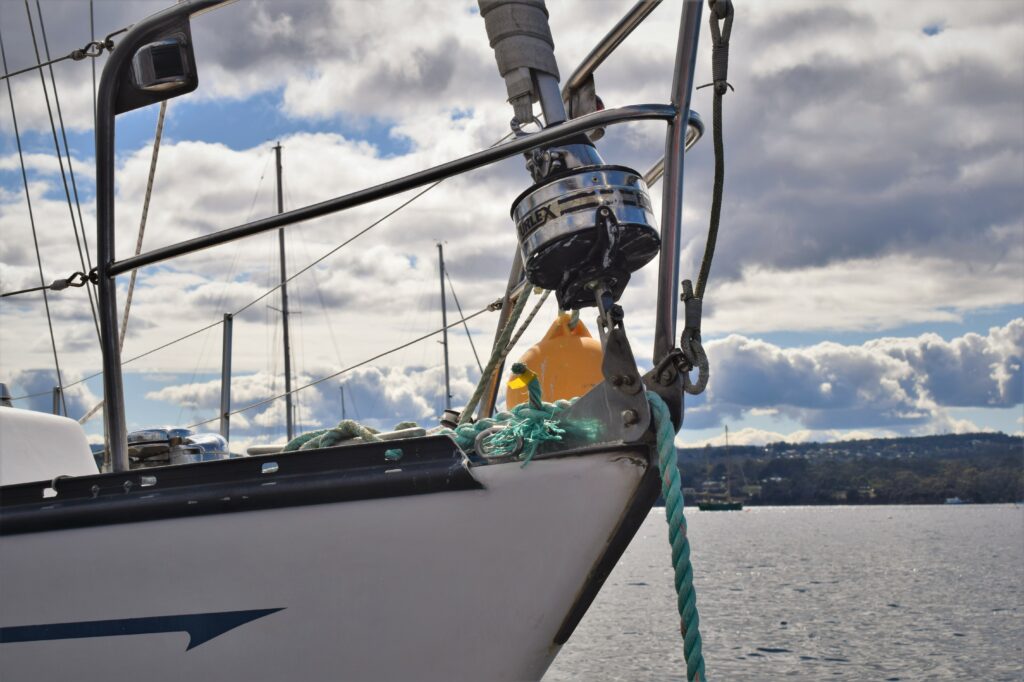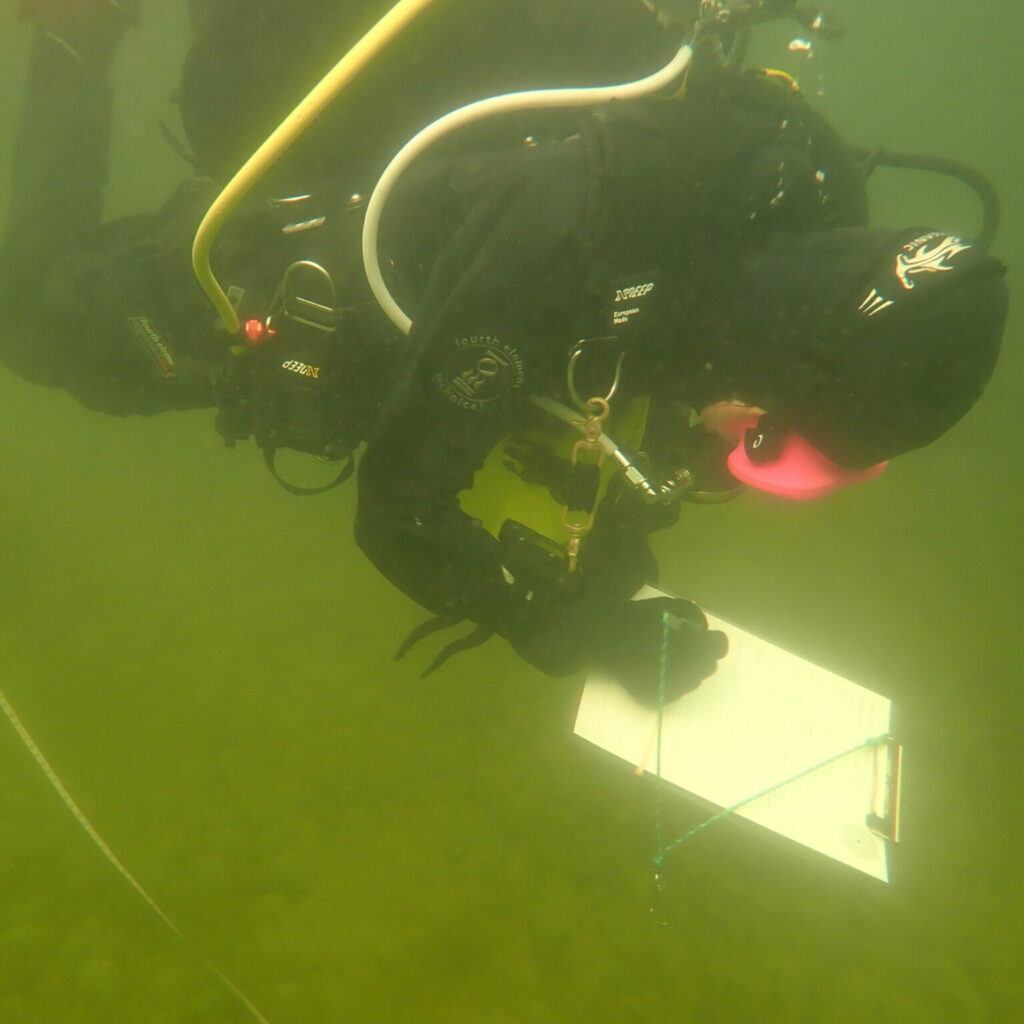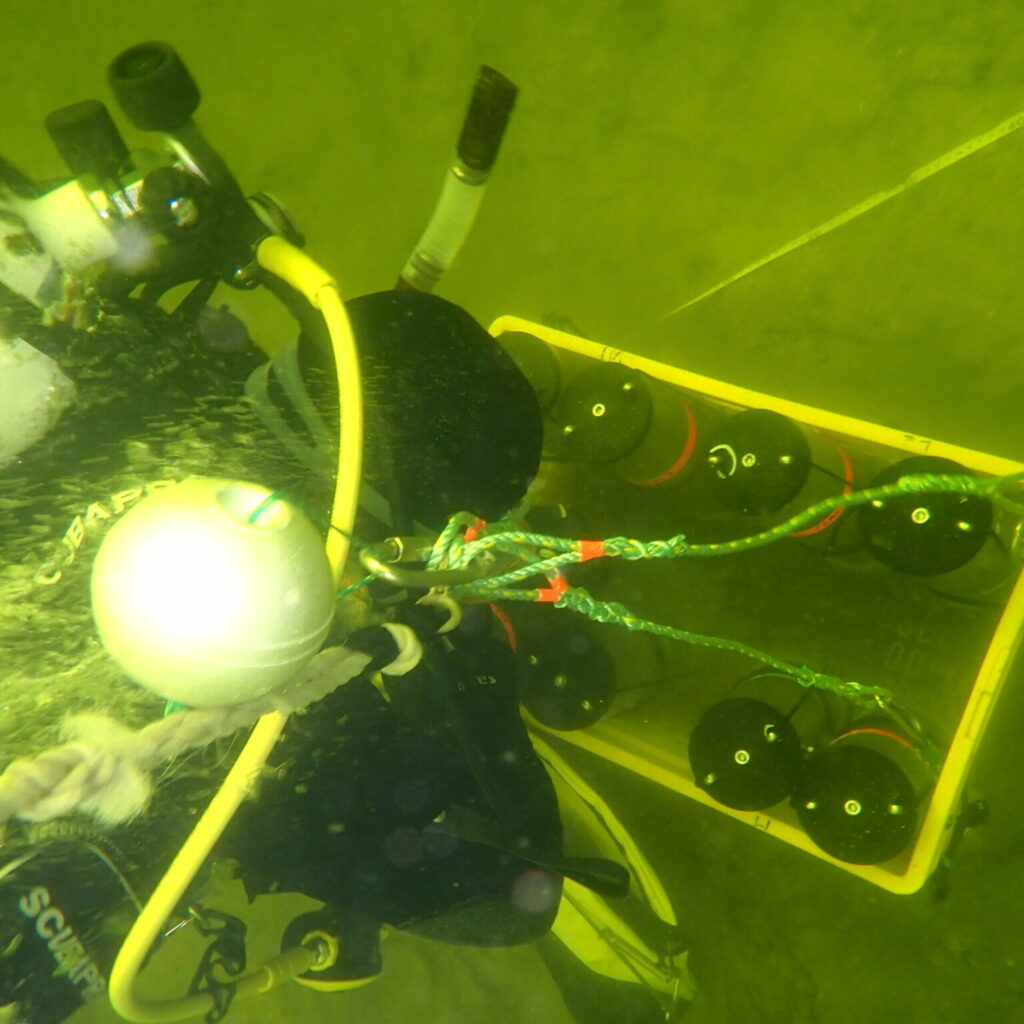Marine life in North West Bay will soon be celebrating, with twelve environmentally-friendly moorings (EFMs) being installed this month.
As part of our partnership project with CSIRO, OzFish Unlimited, and twelve mooring lease-holders who have volunteered to swap their traditional moorings for an EFM, we are working to restore areas of seagrass and other soft sediment habitats such as sponges and stalked ascidians in North West Bay, located in the Channel region of southern Tasmania. Over the last four years, CSIRO has developed solutions to the engineering, governance and cost issues that have impeded greater use of EFMs, and this project is helping to encourage more boat owners to make the switch.
Once installed, we expect to see the mooring ‘scars’ or ‘scrapes’ – areas void of seagrass due to damage from traditional chain moorings – begin to recover and the site regain vital habitat for species including Gould’s squid and Southern calamari. A total of 1.2ha of marine habitat will be directly restored through this project.
CSIRO collected flora and fauna baseline data prior to the installation of the new moorings and refining the monitoring methodology has been a key focus over the past few months. Monitoring will allow us to observe changes after EFM installation and will compare the new EFM sites to the existing chain mooring sites, and to control sites that have not had any moorings installed.
A new, fit-for-purpose Underwater Visual Census (UVC), as well as photoquadrat and in-fauna coring methods, have been developed to increase the surveyed area and statistical power for the assessment of mooring scar impacts and EFM recovery.
The diving plan for monitoring activities has also been refined. Divers need to undertake specific training due to the cold water, task-heavy work, high silt and low visibility of this section of the waterway.
Divers work in pairs for the UVCs and descend along the mooring line to the mooring anchor, or to a GPS point at control sites. Both divers will swim directly outwards from the central point on a predefined bearing and distance up to12m from centre. As they go they record all fish and large macroinvertebrates, including large sessile invertebrates (e.g. ascidians), and taking 5 photoquadrats at each site, they then repeat this process 3 more times along new bearings.
CSIRO will also be sampling sediment to monitor infauna (small animals that live in the sand and mud) and carbon and have developed a coring technique wherein four cores for carbon and four cores for infauna will be taken, two in each side of the scar (windward/leeward). The infauna samples will be shipped to New South Wales for specialist laboratory processing while the carbon samples are processed at CSIRO in Hobart to assess the potential for the EFMs to sequester carbon.
This pilot study will contribute data on the recovery timeframe of seagrass – there are few other studies on seagrass recovery in mooring scars, and none in Australia – but overseas papers suggest we could see signs of recovery within 18 months. Seagrass is important habitat for many rare and threatened species, as well as recreationally valuable fish species and the restoration of seagrass habitat has many flow-on benefits for water quality and ecosystem health.
Take a look at our recent case study to find out more about what motivated the mooring lease-holders to sign on for this project. Click here to read the case study.
This project, set to run until June 2023, is supported by NRM South through funding from the Australian Government.


